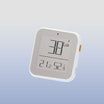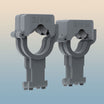The current smart home energy saving mainly uses the lighting system and temperature control system controlled by the sensor switch, which can adjust the brightness and temperature in different modes, as well as the function of automatically turning on the device when needed and automatically turning off when not in use. The energy consumption is significantly saved.
The smart home itself has environmental protection awareness than letting people find ways to cultivate ecological protection awareness. The system automatically closes doors, windows, and curtains through advanced settings when the sun is vital during the day. The power supply is automatically cut off when not in use, so you can save energy anytime and anywhere. The reduction of monthly electricity bills is also natural in the little demand. In the general direction, this is for the green environmental protection of the earth.
In contrast, smart homes use various sensors to coordinate the home appliances, doors and windows, and water and gas and automatically make reasonable arrangements according to preset settings so that many household facilities that consume more electricity, water, and gas can be changed. Being efficient and time-saving, whether directly or indirectly, can play a role in energy saving and environmental protection.
According to experts' statistics, the current high-energy-consuming buildings in my country have reached 95%. About half of the energy is lost in these high-consumption buildings due to the loss of doors and windows. Everyone pays attention to the energy saving of all electrical appliances such as air conditioners and fans. There is no concern about the electricity that insulation can give the home. The emergence of smart homes makes it possible to reduce building energy consumption. The smart home has a system that controls the whole house in real-time. It has gradually become the top priority of building energy-saving development.
How IoT technology can help carbon emissions:
1. IoT helps monitor carbon emissions
The basis of improvement is documentation and understanding. For example, in the carbon footprint disclosed by Apple, the carbon emission in the production process is the largest, accounting for 76%. This is followed by carbon emissions from product use and transport, which account for 14% and 5%, respectively.
2. IoT and AI combine to predict and reduce carbon emissions
According to an analysis by Boston Consulting Group, AI can help reduce carbon dioxide emissions by 2.6-5.3 billion tons, accounting for 5% to 10% of the total reduction.





















Leave a comment
All comments are moderated before being published.
This site is protected by reCAPTCHA and the Google Privacy Policy and Terms of Service apply.